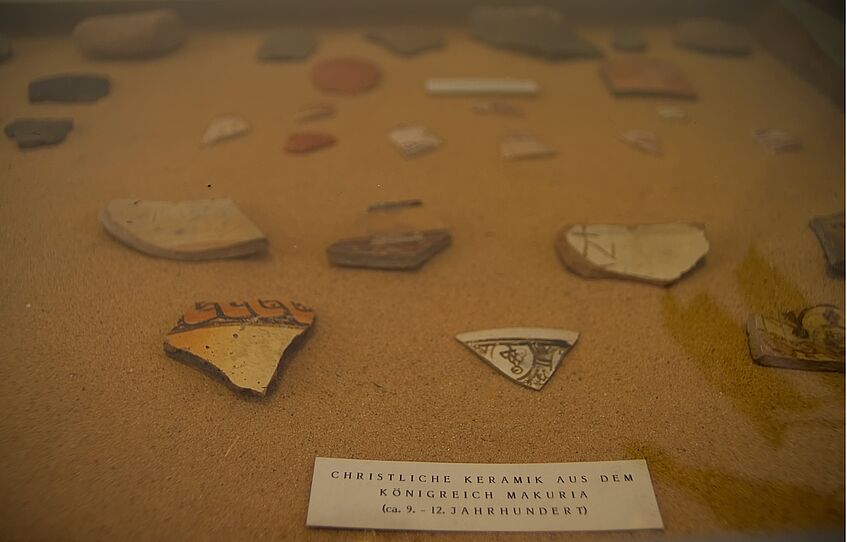African History and Societies
We deal with different socio-spatial references and with different historical depths for the interweaving of local and global dimensions in cultural, political and social structures. Our topics range from meroitistic studies and early global interaction history to colonial and postcolonial transformation processes.
We take our questions for example from current experiences of transnationalization and diaspora. We deal with issues such as family, relationship, age and health, religious and social change, urbanization, development and land issues, taking into account the gender perspective. It is a central concern of ours to clarify the action of African actors in order to identify the possibilities and limitations of their actions. We deal critically with distorting perspectives on Africa - such as eurocentrisms and racisms. These research interests are also reflected in our teaching.
Africa, understood as a multi-faceted and historically globally intertwined world region, is thus developed through regional, thematic and comparative approaches. Social and ideological perspectives are complemented by economic, political and cultural-historical approaches. In the course of the study, historical theories, methods, research approaches and historiography are taught, with special consideration of interdisciplinary and multidisciplinary questions.
Professor of African History and Societies:
Prof. Dr. PD Kirsten RÜTHER

Nubische Keramik © Carl-Philipp Bodenstein
Sudanarchäologische Sammlung
Die Sudanarchäologische Sammlung des Instituts für Afrikawissenschaften an der Universität Wien umfasst mehr als 350 Oberflächenfunde, die im Rahmen eines mehrjährigen Feldforschungsprojektes Mitte der 1980er Jahre an verschiedenen Orten im Sudan gesammelt wurden. Mit Genehmigung der Sudanesischen Antikenverwaltung wurden die Stücke für Lehr- und Demonstrationszwecke an die Universität Wien gebracht, wo sie noch heute im Lehrbetrieb eingesetzt werden. Dabei handelt es sich in erster Linie um Keramikscherben und Kleinfunde (Pfeilspitzen, Reibsteine und Schmuck) aus Gereif West, Napata, Meroe, Wadi El-Ghazali und anderen kleineren Fundstätten.
Dieser Bestand wird durch Fundstücke aus dem saharanischen Raum, die für Vergleichszwecke angekauft wurden, ergänzt. Die Objekte stammen aus den verschiedensten Epochen und decken den gesamten Zeitraum vom Neolithikum bis zum Spätmittelalter ab.
Die Sammlung ist vollständig inventarisiert und kann für wissenschaftliche Zwecke nach vorheriger Terminvereinbarung besichtigt werden.
https://bibliothek.univie.ac.at/sammlungen/sudanarchaologische_sammlung.html
